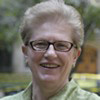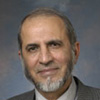 David Arnow
Jewish
David Arnow
Jewish
For millennia Jewish law has drawn fundamental distinctions between men and women. In light of the movement toward egalitarianism, two such distinctions are especially important: 1) exempting women from positive religious obligations that are time-bound (e.g., participating in prayer services that occur at particular times of day); 2) excluding them from public roles in religious life. Thus women were not expected to participate in most public prayer, were not counted in the minyan (the quorum of 10 required for group worship), could not read from the Torah, and could not serve as a cantor, rabbi or decisor of law. Likewise, there were even disputes about whether it was legitimate for women to engage in Jewish study and for centuries the negative view held sway. The language of the Talmud concerning the recitation of the Shema, widely considered Judaism’s most hallowed prayer, is instructive:
Women, slaves, and minors are exempt from reciting the Shema … That they are exempt from the Shema is self-evident — it is a positive commandment which is time-bound . . .*
A variety of biblical sources has been used to justify these limitations. The story of God’s creation of Eve from Adam’s rib has regularly been used to bolster the view that a woman’s primary obligation is to her husband. Legal decisors have argued that because Eve was created from Adam’s rib, Eve exists to serve him just like any of his other body parts are meant to serve him.* Exempting women from time-bound religious commandments therefore eliminates potential conflicts between serving one’s husband and fulfilling certain religious obligations. The story of Eve’s having eaten the forbidden fruit in the Garden of Eden has likewise provided a pejorative midrashic rationale for practices traditionally assigned to women. For example, ancient sources explain that as a result of Eve’s sin, she “brought death into the world” and “extinguished Adam’s soul.”* To atone for this, women light the candles before the onset of the Sabbath and festivals. It is also said that women must observe the laws concerning purification after menstruation as atonement for Eve’s having “shed Adam’s blood,” again by bringing death into the world.*
A verse from Psalms (45:14) has historically been invoked to support a view of modesty that defines a woman’s place as in the home rather than in public: “All the honor of the king’s daughter is within.” The story of the 10 spies who brought back negative reports about the Promised Land provided the Talmud with a rationale for not counting women in the quorum for congregational prayer: a) the 10 spies were referred to as a “congregation;” b) the spies were men; c) therefore only men should be counted in the congregational prayer quorum.*
 Mary C. Boys
Christian
Mary C. Boys
Christian
Despite their prominence in the New Testament, women’s roles became circumscribed as the Christian movement settled into patriarchal societies. Interpretations of Genesis 2-3 played an especially formative role. Christian women were “daughters of Eve, and thus the source of temptation.” Women had a corrupting influence. Note how the author of the First Letter to Timothy (2:11-15) uses Genesis to rationalize his assertion of male superiority:
Let a woman learn in silence with full submission. I permit no woman to teach or to have authority over a man; she is to keep silent. For Adam was formed first, then Eve; and Adam was not deceived, but the woman was deceived and became a transgressor. Yet she will be saved through childbearing, provided they continue in faith and love and holiness, with modesty.
For the early Christian writer Tertullian, women were the “devil’s gateway” (On the Apparel of Women, 1). Augustine, one of the greatest Christian theologians, nevertheless believed that a woman imaged God only together with her husband, whereas a man alone could image God completely ( On the Trinity, 12.7.10). Thomas Aquinas, the “Angelic Doctor” considered women defective and misbegotten (Summa Theologica, 1, q.92, a.1).
Roman Catholicism has traditionally emphasized the role Mary of Nazareth; this emphasis has both healthy and unhealthy dynamics. On the one hand, it has placed a woman in a central role, thereby providing “imagery for God missing in the masculinized monotheism of Western Christianity.”* On the other, much of the piety associated with Mary has dwelt on her submissiveness and gentleness; the Virgin Mary is exalted, while other women are subordinated to men. Recent writings, however, offer more balanced views.*
 Muhammad Shafiq
Muslim
Muhammad Shafiq
Muslim
The Qur’an did not make Eve responsible for tempting Adam to commit sin, but both were equally tempted by Satan and both were forgiven by God. The Qur’an in one place warned Adam by saying: “O Adam! Verily, this is a foe unto thee and thy wife: so let him not drive the two of you out of this garden and render thee unhappy” (20:117). “But Satan whispered unto him, saying: ‘O Adam! Shall I lead thee to the tree of life eternal; and [thus] to a kingdom that will never decay?’ (20:120). “And so the two ate [of the fruit] thereof: and thereupon they became conscious of their nakedness and began to cover themselves with pieced-together leaves from the garden. And [thus] did Adam disobey his Sustainer, and thus did he fall into grievous error” (20:121).
Having bestowed equal social, political and educational rights to women in the Qur’an, women played an active role in the medieval period of Islam. Many women were great religious scholars, politicians and rulers in the early period of Islam. Even Muhammad’s (peace be upon him) wife `Aisha narrated Hadith from the Prophet and played an active role in society. Mohammad Akram Nadwi* has compiled biographies of 8,000 female jurists during the Islamic medieval period and orientalist scholar Ignaz Goldziher estimated that 15 percent of medieval Hadith scholars were women. Women were important Transmitters of Hadith compiled by Sahih Sitthah (Six Collections of Prophetic Traditions).*
Since Islam has no priesthood, anyone with reasonable knowledge of Islam can lead the congregants in worship. But can women lead the congregants? There are various Hadith that prophet Muhammad asked some knowledgeable women to lead women of their household in worship. The Hanafi, Shafi`i and Hanbali, the three known Schools of Islamic Law, allow women to lead women in worship. But can a woman lead a mixed group of males and females? It is controversial. There is no Qur’anic rule that woman cannot lead but there are some Hadith that are subjects of dispute between the Islamic scholars in the modern period.
Also because Islam has no priesthood, there is no attraction to be Imam of the community. Many Imams in Muslim world, including America, live with meager salaries, are subject to daily criticism and have no religious authority and little influence on the community. Those who have gained acceptance and excellent reputations have done so mostly because of their scholarship and civic engagement. I was Imam for 25 years but every day I looked forward to leaving — even though I had gained a wider respect from the Muslim and non-Muslim communities because of my interfaith activism.
In Islam women may not lead a mixed congregation. What I foresee here in North America is the possibility that the next generation of many women will refuse to accept a man’s saying they cannot have this leadership role. Today in some American mosques women are presidents, give speeches from the pulpits and are very active in Mosque affairs. But whether they will demand to lead a mixed congregation, only the future will tell.
Note: Translation of the Qur’anic verses and many of the Hadith translation with references were taken from Islamicity.com; some translations of and references to the Hadith were taken from ahadith.co.uk.